Place aux femmes !
Exposition virtuelle
10 - 17th April 2021

Image: 110 x 160 cm
Figure pentagonale is the title of a set of six photographs, seemingly similar, but each with subtle differences. Each image features the same woman in two different positions, thus juxtaposing two temporalities: one draws a pentacle on the floor with chalk, while the other manipulates the carpet covering a theatre stage. Calling on the register of magic, the book in the photo assumes that it can influence the course of time by modifying fortune through chance, and in particular the probability of winning at games.
This series proposes a reflection on causality, and in particular on the existence of chance and fortune. Each small particularity of each photograph reflects different causalities, which suggests in a Pascalian conception that chance does not exist. Only the causality that originates in the future - fortune - is a key to explaining the present event.
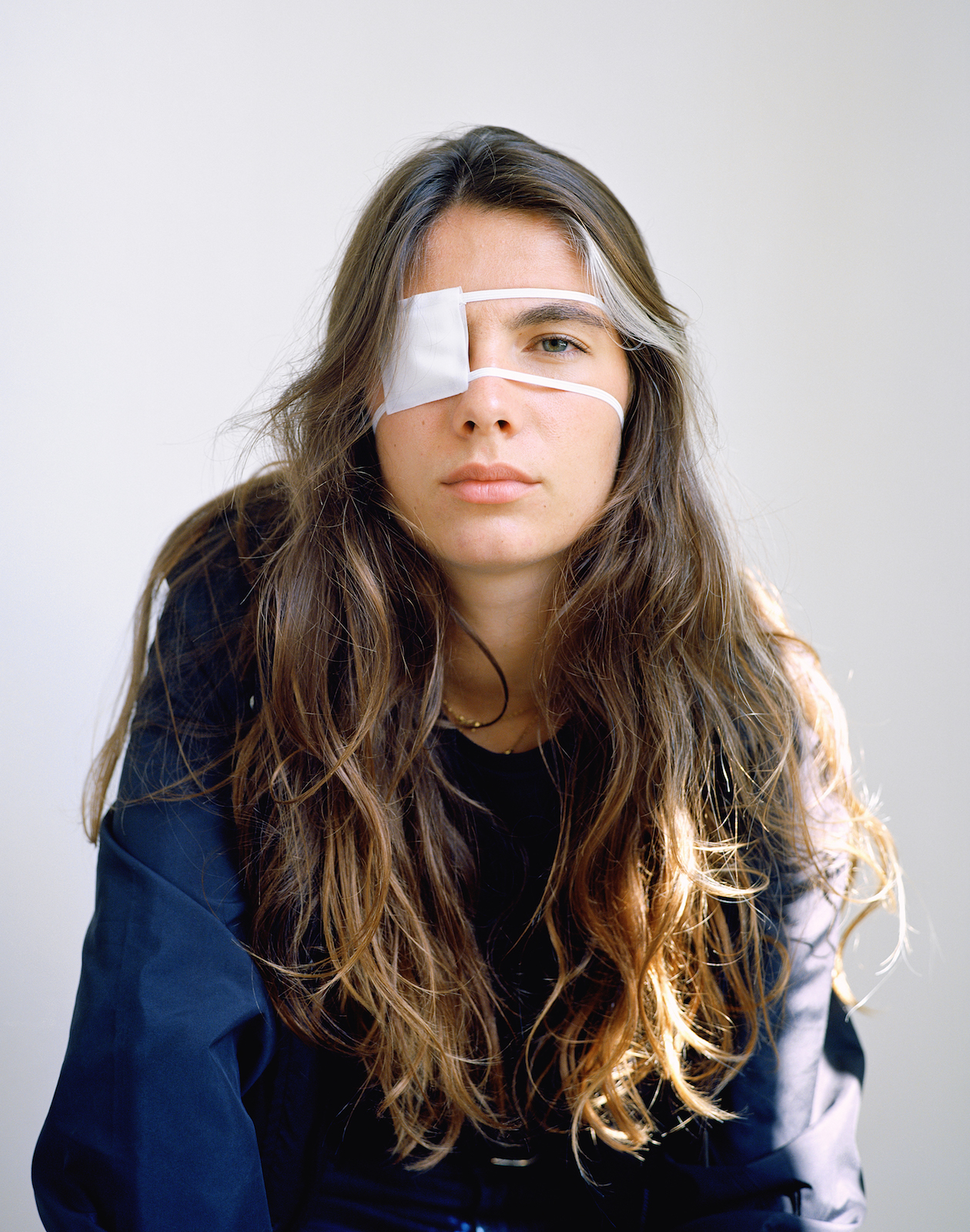
Color photograph
Image: 80 x 63 cm
Frame: 83,5 x 66,5 cm
Human being perceives relief and locates himself in space thanks to the coordination of his two eyes. This simple assertion is at stake in the Télé-vision series, which is conceived as a representation of seeing in the form of a photographic portrait. In the manner of a stereoscopic vision, in which the combination of two images is essential to the apprehension of space and volume. Each photograph embodies the point of view of a single eye, both for the viewer and the model. The entire series thus proposes four similar but unique portraits, presented in pairs, in the image of the gaze that is cast upon them. By placing the viewer in front of the decomposition of the gaze, the series underlines the way in which the omnipresence of images modifies our relationship to the world. The transmission of sense experience through words is slowly replaced by a truncated two-dimensional world constructed by images.

Color photograph
Image: 80 x 63 cm
Frame: 83,5 x 66,5 cm
Human being perceives relief and locates himself in space thanks to the coordination of his two eyes. This simple assertion is at stake in the Télé-vision series, which is conceived as a representation of seeing in the form of a photographic portrait. In the manner of a stereoscopic vision, in which the combination of two images is essential to the apprehension of space and volume. Each photograph embodies the point of view of a single eye, both for the viewer and the model. The entire series thus proposes four similar but unique portraits, presented in pairs, in the image of the gaze that is cast upon them. By placing the viewer in front of the decomposition of the gaze, the series underlines the way in which the omnipresence of images modifies our relationship to the world. The transmission of sense experience through words is slowly replaced by a truncated two-dimensional world constructed by images.
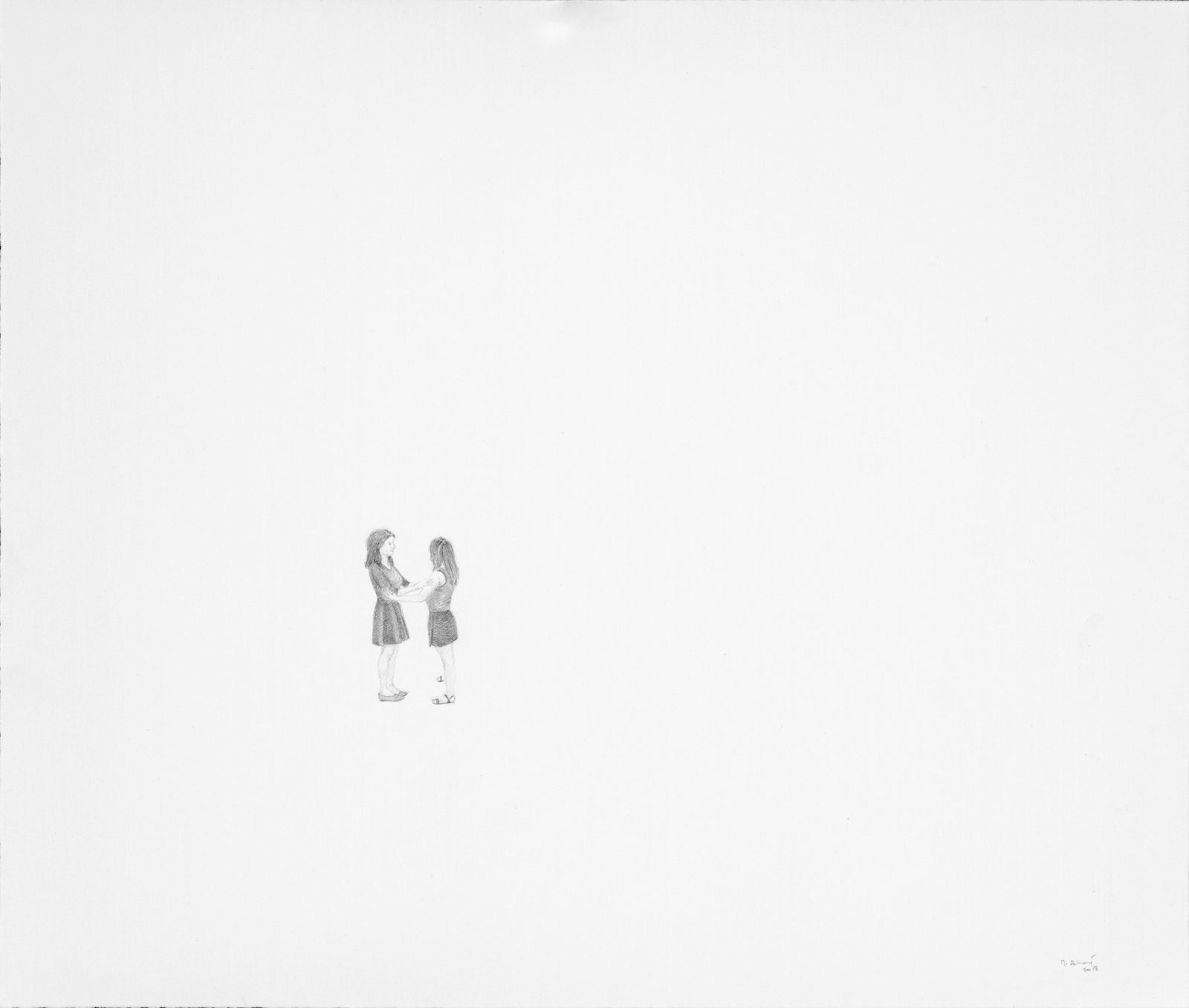
30 x 35,5 cm
Massinissa Selmani's drawings are inspired by political news, especially from cut-outs of the press that he has been collecting for many years. By confronting and juxtaposing these elements without logical coherence, the artist creates enigmatic and ambiguous scenes, underlining the ironic, even tragic character of the absurd and strange situations represented in his drawings.
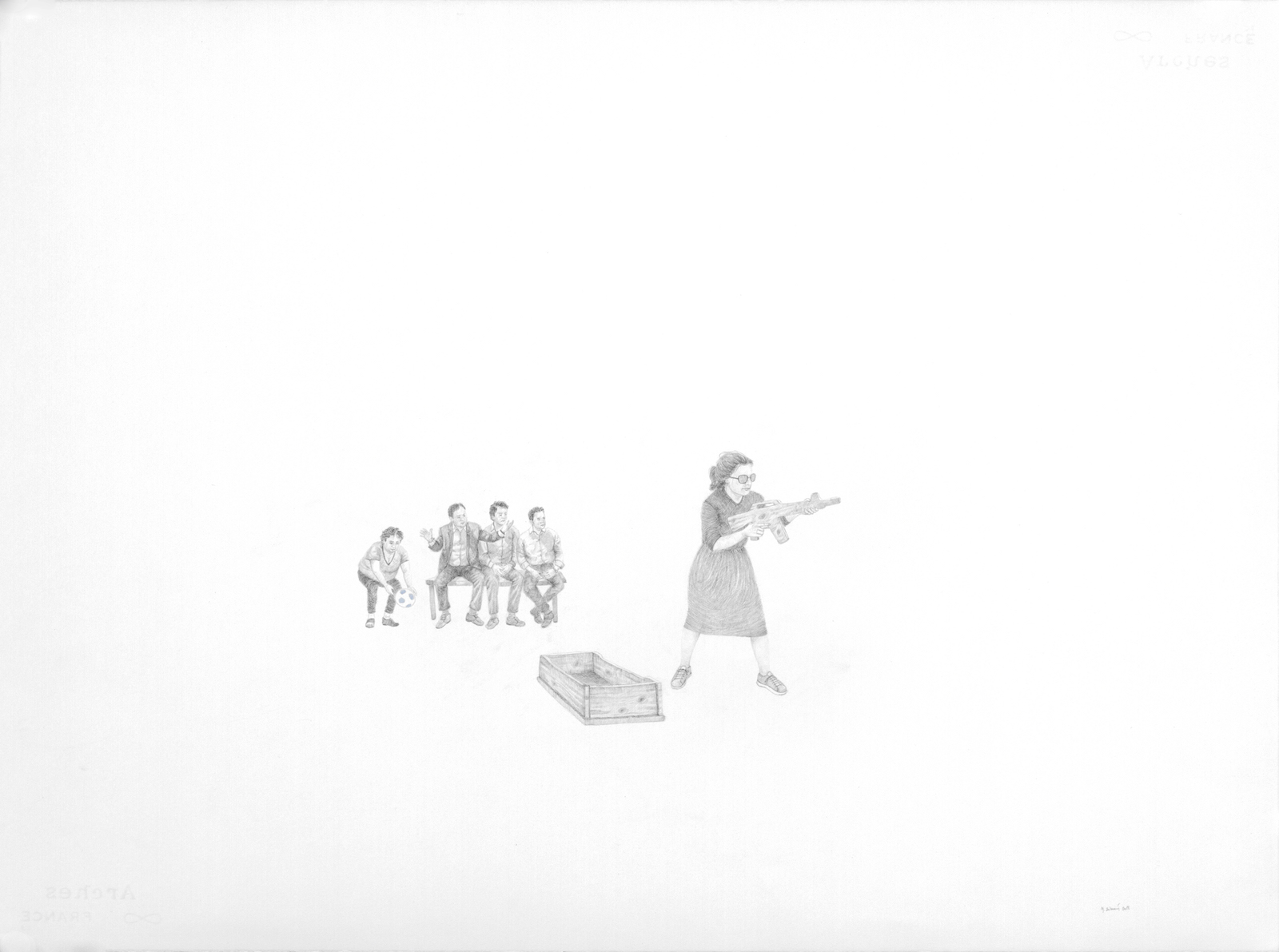
57 x 77 cm
Signed and dated lower right
Massinissa Selmani's drawings are inspired by political news, especially from cut-outs of the press that he has been collecting for many years. By confronting and juxtaposing these elements without logical coherence, the artist creates enigmatic and ambiguous scenes, underlining the ironic, even tragic character of the absurd and strange situations represented in his drawings.

42 x 59,4 cm
In this series, Valérie Mréjen has enlarged details of postcards from the Archives of the city of Vienna. From these views with one or more characters, she proposes short fictional narratives that are inspired by the images. She rethinks their contexts, sometimes amusing, sensitive or disenchanted. Creating a link between image and narrative, Valérie Mréjen gives new life to these postcards, recalling their primary function as a medium for epistolary exchanges.
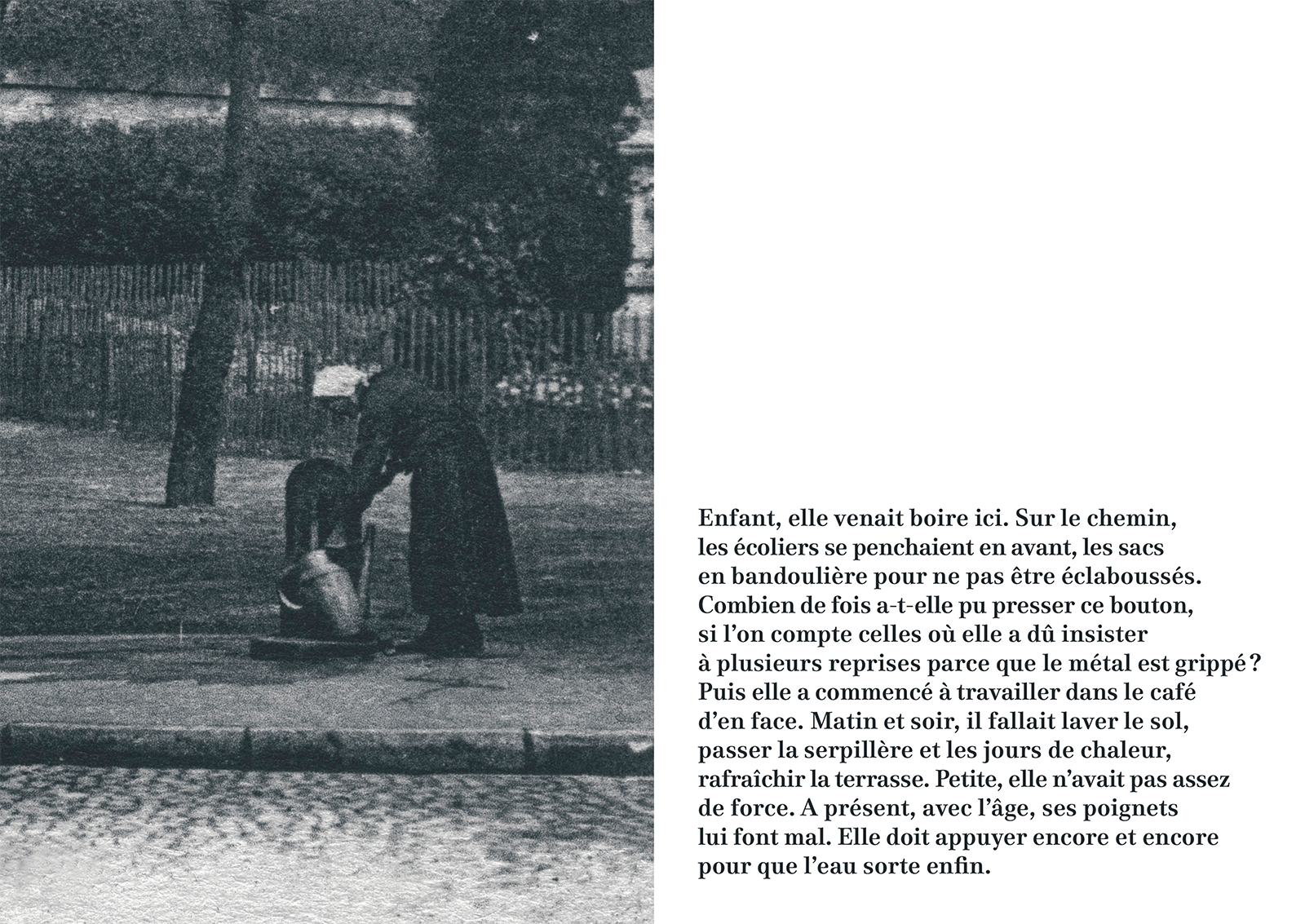
42 x 59,4 cm
In this series, Valérie Mréjen has enlarged details of postcards from the Archives of the city of Vienna. From these views with one or more characters, she proposes short fictional narratives that are inspired by the images. She rethinks their contexts, sometimes amusing, sensitive or disenchanted. Creating a link between image and narrative, Valérie Mréjen gives new life to these postcards, recalling their primary function as a medium for epistolary exchanges.

42 x 59,4 cm
In this series, Valérie Mréjen has enlarged details of postcards from the Archives of the city of Vienna. From these views with one or more characters, she proposes short fictional narratives that are inspired by the images. She rethinks their contexts, sometimes amusing, sensitive or disenchanted. Creating a link between image and narrative, Valérie Mréjen gives new life to these postcards, recalling their primary function as a medium for epistolary exchanges.

42 x 59,4 cm
In this series, Valérie Mréjen has enlarged details of postcards from the Archives of the city of Vienna. From these views with one or more characters, she proposes short fictional narratives that are inspired by the images. She rethinks their contexts, sometimes amusing, sensitive or disenchanted. Creating a link between image and narrative, Valérie Mréjen gives new life to these postcards, recalling their primary function as a medium for epistolary exchanges.
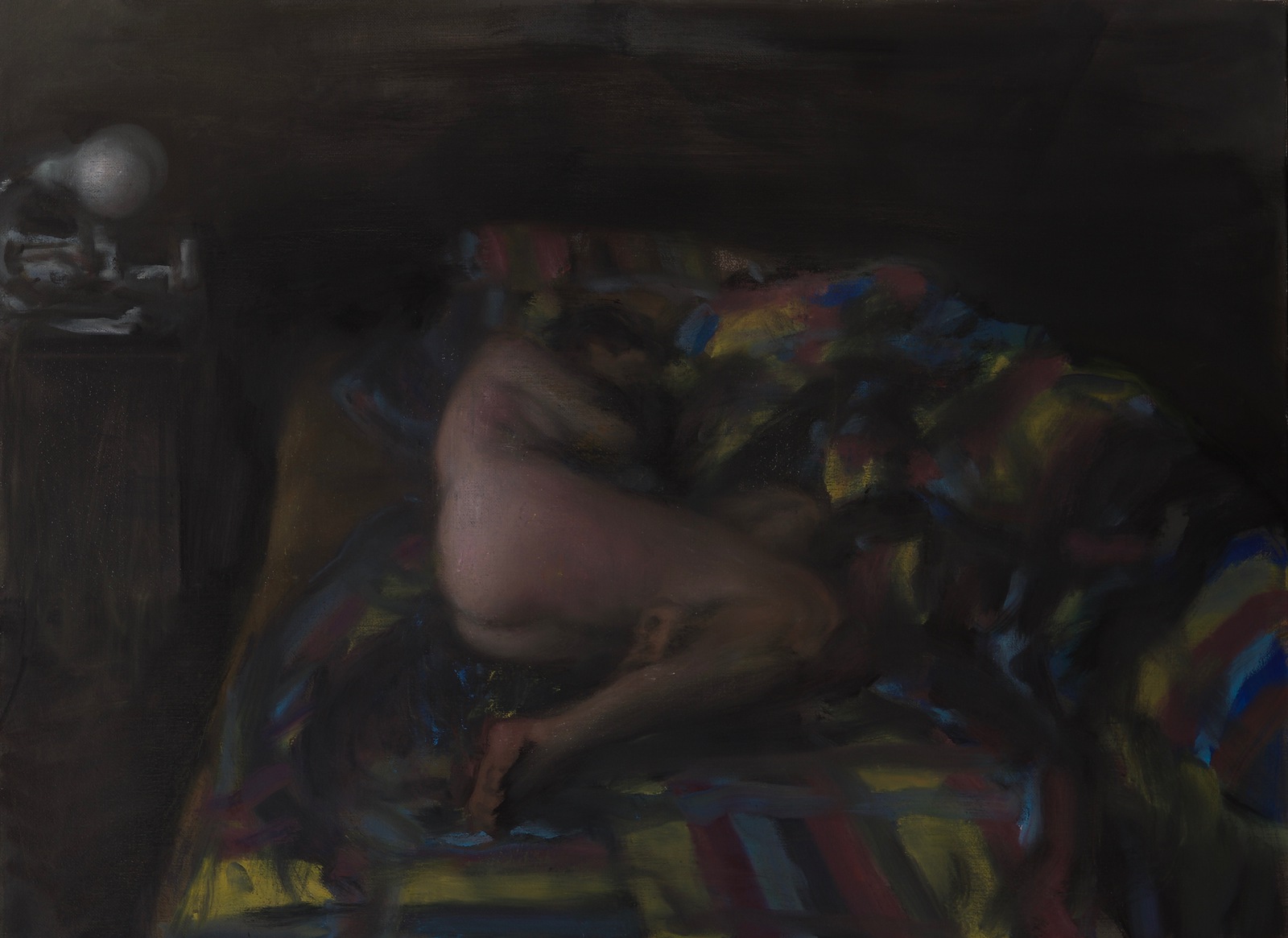
110 x 160 cm
Morpheus's bed depicts a naked woman lying on her bed in the dark. Both the room and her body are barely distinguishable, blending successively into the patterns of the coloured sheets. In this way, Florin Stefan depicts the intimacy of this woman's sleep. And it is the painting that becomes important: the warm colours catch the eye and take the viewer into the calm of this silent room.
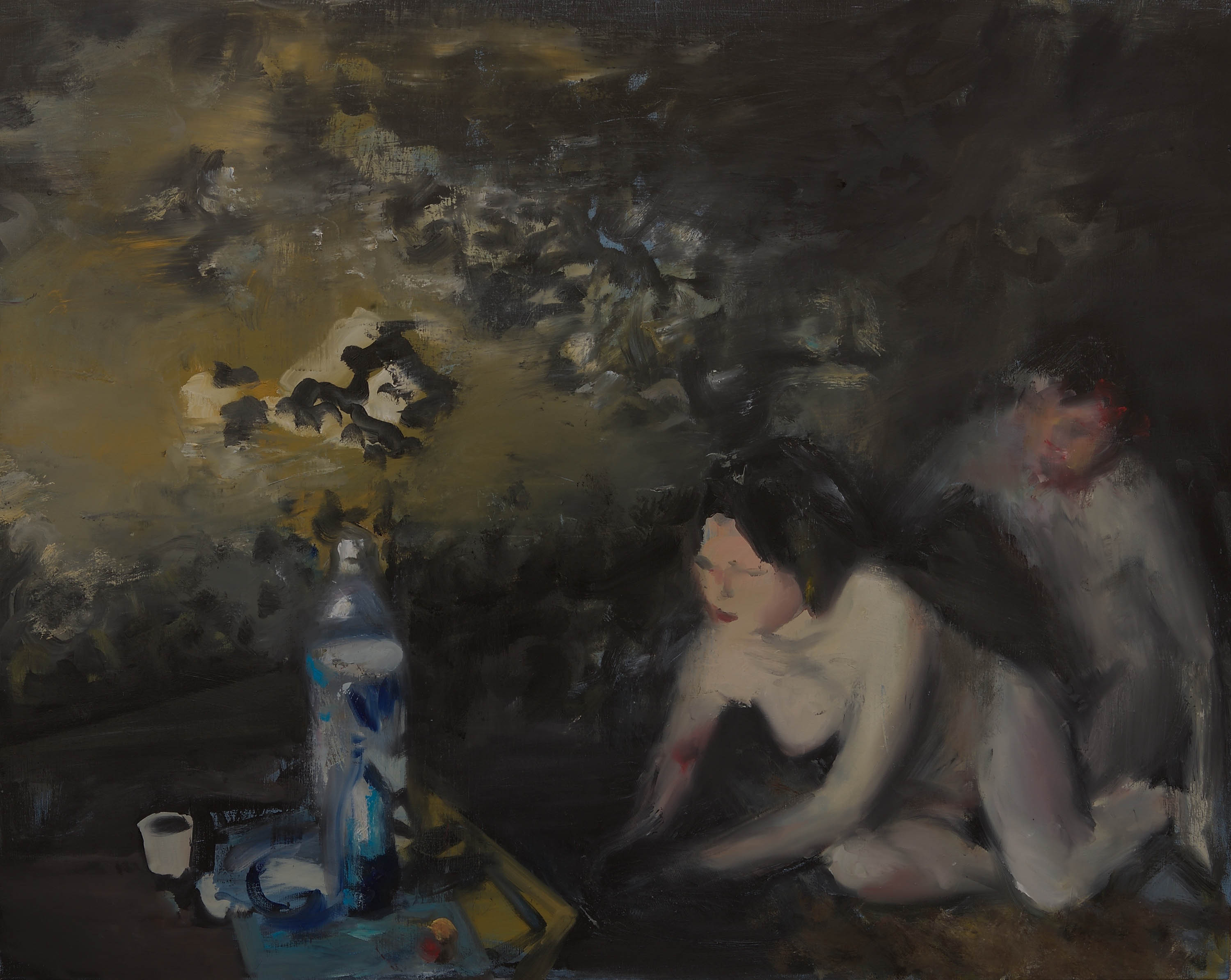
110 x 140 cm
In Russian Geisha, Florin Stefan manipulates themes that are dear to him: The female nude and the reinterpretation of classic pictorial scenes. Here, one can recognize a revisiting of the Déjeuner sur l'herbe with a resolutely modern touch and staging. As often with Florin Stefan, the subject matter ultimately takes a back seat. The eye is drawn to the painting itself, in this case, the still life with the plastic bottle in the foreground or the large kitschy floral tapestry that serves as a backdrop.
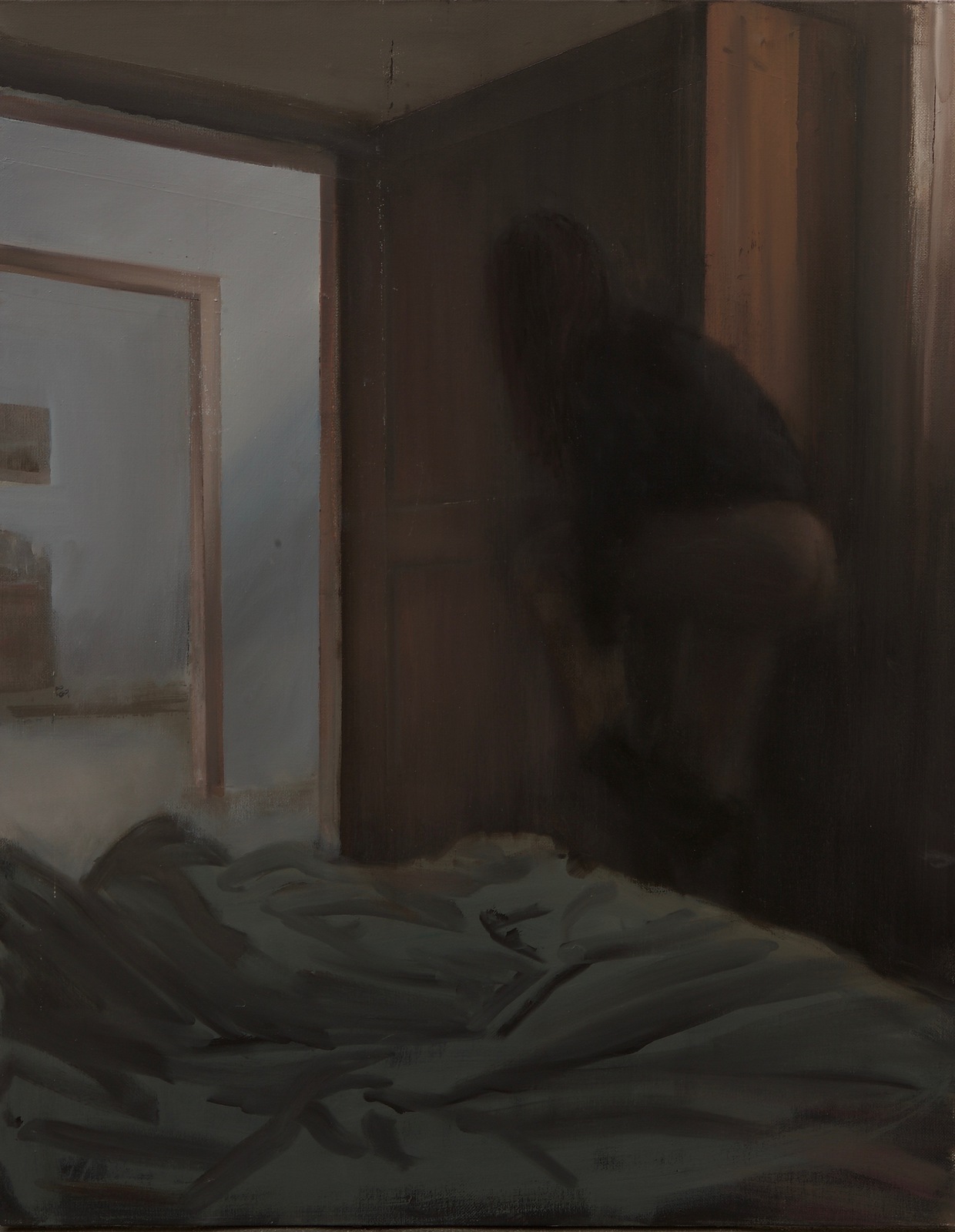
140 x 100 cm
In Camera Obscura, Florin Stefan plays on perspective through the succession of doors depicted as a mise en abyme of the idea of the frame. The female nude, a theme dear to the artist, is expressed in a play on light reinforced by the title, which recalls the importance of cinematographic framing in the painting of the Romanian artist.

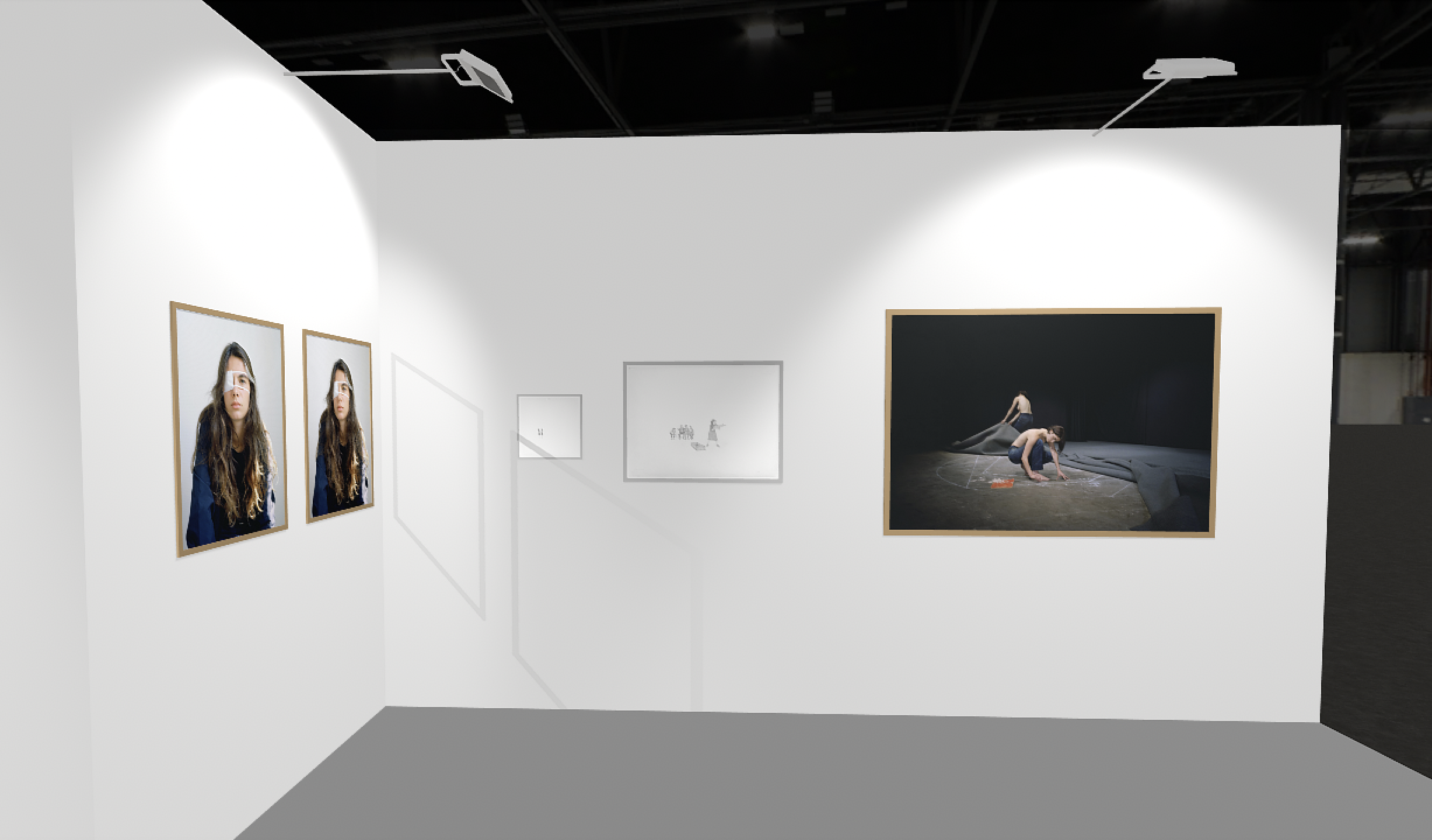

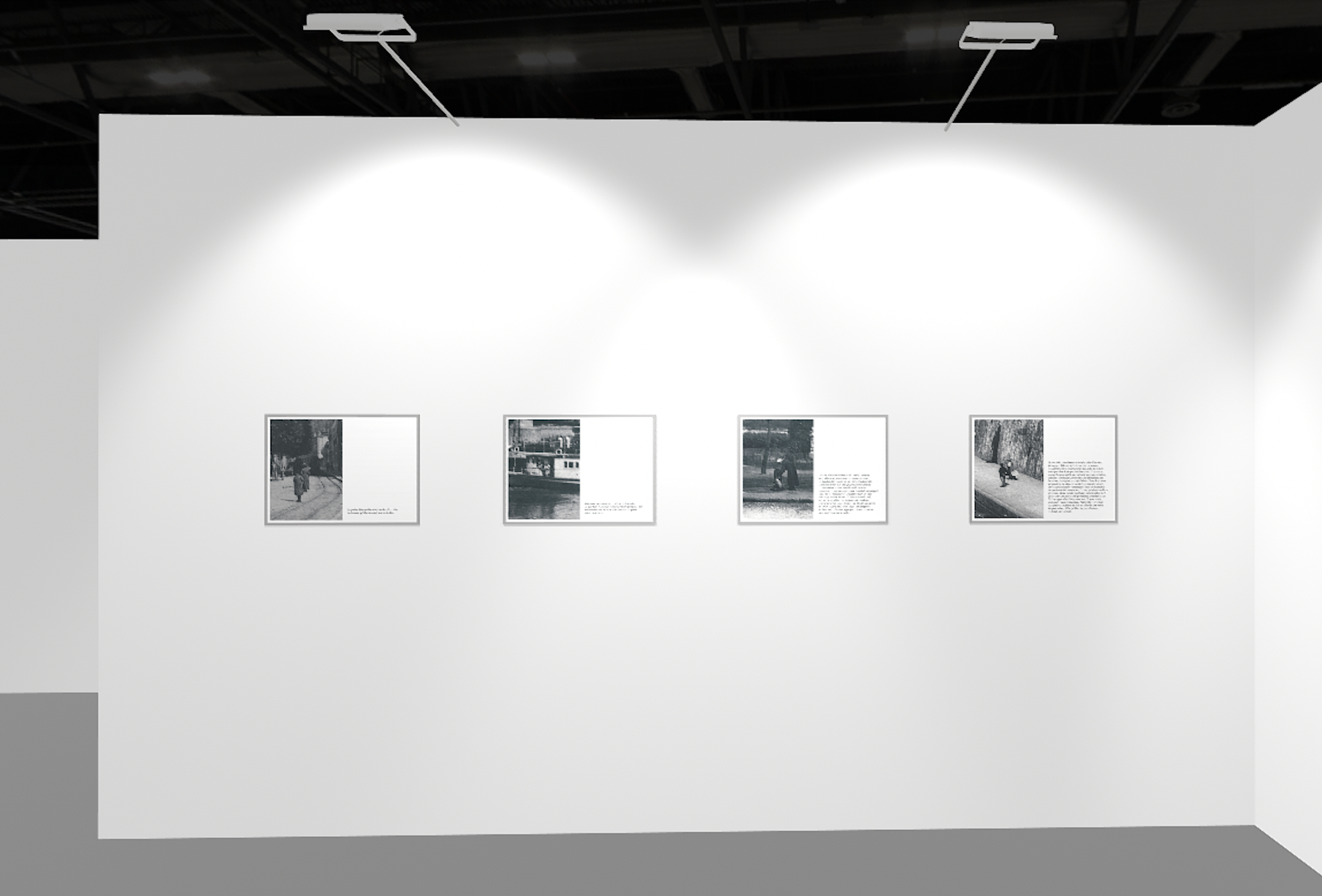
While waiting for the reopening of the galleries and the new solo exhibition of Massinissa Selmani, we decided to propose you regularly thematic virtual exhibitions.
For this second exhibition, Place aux femmes! (Focus on women!) and on female representations in the works of our artists. Whether they are observant, pensive, sensual, active or rebellious, women representations are in the spotlight this week.
With works by Laurent Montaron, Valérie Mréjen, Massinissa Selmani and Florin Stefan.